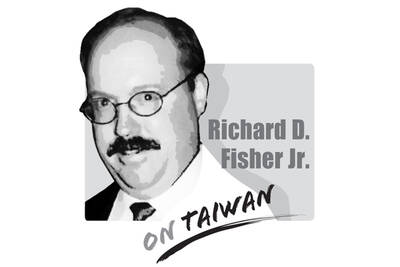Taiwan’s manufacturing and services industries are showing signs of slowing down the Taiwan Economic News reported on Tuesday. The Taiwan Institute of Economic Research (TIER) said that manufacturing edged up a mere 0.24 percent in July, while services fell 2.61 percentage points during the same period. Indicators in the construction industry were less than favorable and a construction slowdown is predicted.
TIER has predicted that overall growth will slow down in the second-half of the year. Moreover, the percentage of manufacturers surveyed who foresee a better climate over the next six months fell 4.7 percent from the previous month.
These numbers are in stark contrast to the figures announced in the Taiwan Economic News a few days ago. With high trade growth and low inflation in the first half of this year, one would have thought that the chances of another economic slowdown were minimal.
However, it appears one is right around the corner.
What went wrong? First-half numbers — and especially the second-quarter figures — looked promising and with the Economic Cooperation Framework Agreement (ECFA) expected to begin next month, one would expect a much more positive forecast.
President Ma Ying-jeou’s (馬英九) administration and the Chinese Nationalist Party (KMT) government has spent so much time over the past year and a half emphasizing the benefits of the ECFA that it has sometimes seemed as though they were attempting to will economic prosperity into being.
This latest economic forecast should have Taiwanese asking not only what information its leaders have been reading but also what was the purpose of imposing the ECFA.
Pushed as a pragmatic and “purely” economic document that promised both immediate (early harvest list) and long-term economic advantages, the ECFA was viewed by many economists and politicians as skewed in Taiwan’s favor, and it was rammed through Taiwan’s legislature as a policy designed to save Taiwan from looming and inevitable economic marginalization.
Instead, the ECFA appears to have fallen stillborn from the Chinese Communist Party (CCP)-KMT party presses from which it was born.
The numbers simply do not add up. Before the ECFA was even signed, Taiwan’s economy was already showing signs of recovery; trade, with year-on-year growth of over 46 percent, was thriving. The ECFA was imposed as a necessary measure to save Taiwan’s “failing” economy, which was being threatened with marginalization (even though the numbers were already indicating a strong recovery).
The ECFA was then signed after economic recovery appeared certain and trade numbers were growing rapidly. Now, after the ECFA has been signed, second-half growth is expected to slow. What gives?
Reality is finally beginning to rear its ugly head. The ECFA, instead of being purely economic, is almost entirely political. Not only has it served CCP-KMT interests by bringing Taiwan and China closer economically (although it would appear with few actual economic benefits) and politically, it has also served as a tool the KMT can use to continue to force its agenda through the legislature and into Taiwanese homes. The continuous advertisements on television and radio promoting the ECFA even after the agreement has been signed only serve to underscore its political, not economic, consequences.
If KMT lawmakers disagree, then we already have the gloomy economic numbers to prove it.
Nathan Novak is a student of China and the Asia-Pacific region with a particular focus on cross-strait relations.
Lockheed Martin on Tuesday responded to concerns over delayed shipments of F-16V Block 70 jets, saying it had added extra shifts on its production lines to accelerate progress. The Ministry of National Defense on Monday said that delivery of all 66 F-16V Block 70 jets — originally expected by the end of next year — would be pushed back due to production line relocations and global supply chain disruptions. Minister of National Defense Wellington Koo (顧立雄) said that Taiwan and the US are working to resolve the delays, adding that 50 of the aircraft are in production, with 10 scheduled for flight

Victory in conflict requires mastery of two “balances”: First, the balance of power, and second, the balance of error, or making sure that you do not make the most mistakes, thus helping your enemy’s victory. The Chinese Communist Party (CCP) has made a decisive and potentially fatal error by making an enemy of the Jewish Nation, centered today in the State of Israel but historically one of the great civilizations extending back at least 3,000 years. Mind you, no Israeli leader has ever publicly declared that “China is our enemy,” but on October 28, 2025, self-described Chinese People’s Armed Police (PAP) propaganda
Chinese Consul General in Osaka Xue Jian (薛劍) on Saturday last week shared a news article on social media about Japanese Prime Minister Sanae Takaichi’s remarks on Taiwan, adding that “the dirty neck that sticks itself in must be cut off.” The previous day in the Japanese House of Representatives, Takaichi said that a Chinese attack on Taiwan could constitute “a situation threatening Japan’s survival,” a reference to a legal legal term introduced in 2015 that allows the prime minister to deploy the Japan Self-Defense Forces. The violent nature of Xue’s comments is notable in that it came from a diplomat,
The artificial intelligence (AI) boom, sparked by the arrival of OpenAI’s ChatGPT, took the world by storm. Within weeks, everyone was talking about it, trying it and had an opinion. It has transformed the way people live, work and think. The trend has only accelerated. The AI snowball continues to roll, growing larger and more influential across nearly every sector. Higher education has not been spared. Universities rushed to embrace this technological wave, eager to demonstrate that they are keeping up with the times. AI literacy is now presented as an essential skill, a key selling point to attract prospective students.